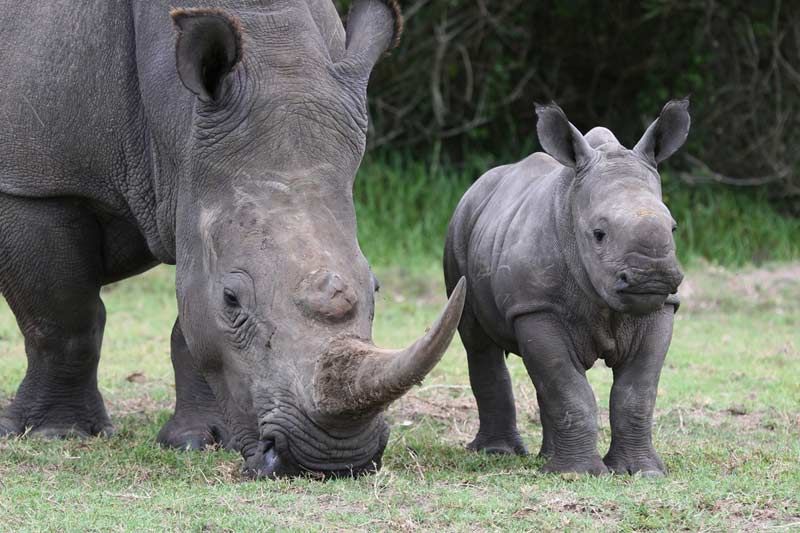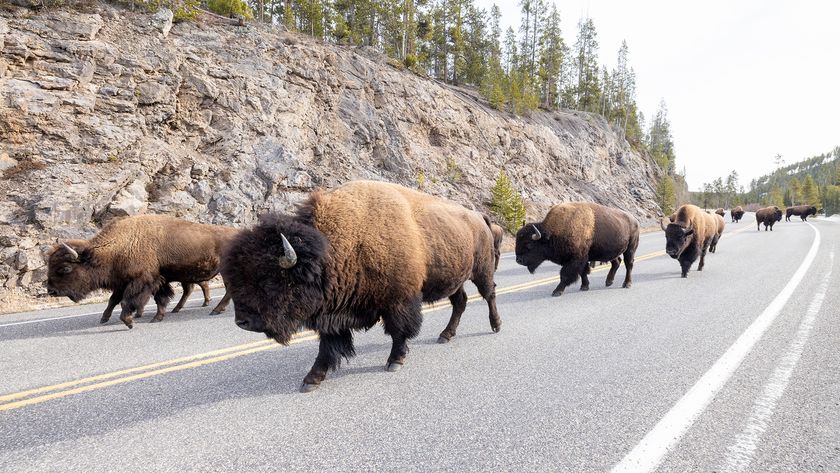
Dwindling Large-Mammal Populations Create Ripple Effects

Michael Sainato is a freelancer with credits including the Miami Herald, Huffington Post and The Hill. Follow him on Twitter at @msainat1. Sainato contributed this article to Live Science's Expert Voices: Op-Ed & Insights.
The black rhinoceros has been hunted to near extinction for its horns, worth more by weight than gold or diamonds. The hippopotamus's once-broad range has exponentially decreased throughout Africa. Elephant populations have shrunk by more than half in just the past 30 years due to the ivory trade. Across the world, the largest plant eaters are on a downward trajectory toward extinction, with the loss of the western black rhinoceros in 2011 one of the first casualties in the collapse.
The downward trends are mostly attributed to hunting and human encroachment on these animals' habitats, and the majority of the suffering species live in developing countries where focus on conservation and research is lacking. [Elephant Images: The Biggest Beasts on Land ]
The collapse of large herbivores
"We need to do a better job of informing researchers and the public of the critical need for more research in developing countries," said William Ripple, distinguished professor of ecology at Oregon State University and the leading author of a new study, Collapse of the World's Largest Herbivores. This study highlighted the decline of 74 of the animals.
"Only 10 percent of conservation efforts are directed toward developing countries," he added. "The world's wealthy countries need to provide the funding for ensuring the preservation of threatened large herbivores."
Of those 74 animals studied, 44 are listed as threatened species by the International Union for the Conservation of Nature, with all but one residing in developing countries. And yet, Ripple's study showed that the majority of large herbivore research is conducted by scientists from outside those nations.
Sign up for the Live Science daily newsletter now
Get the world’s most fascinating discoveries delivered straight to your inbox.
"Ironically, these species are declining just as scientists are beginning to learn about their ecological significance, such as their role in seed dispersal and in the nutrient cycle — irreplaceable mechanisms of plant regeneration," Ripple added.
The impacts of extinction
The ecological and social costs of losing these herbivores will be felt by both humanity and the ecosystems that depend on these animals. Losses will include the animals' ecological roles, the tourism fueled by their presence and the food source they provide to as many as 1 billion people, as well as to carnivores and scavengers. [Domino Effect of 'Co-extinction' Pinned Down]

Large herbivores are also vital ecosystem engineers, critical for seed dispersal and vegetation consumption that help maintain the distribution and abundance of plant species. The open vegetation patches they create through their trampling inhibits the initiation and spread of wildfires. For example, African elephants help convert woodland to shrubland, increasing dry-season vegetation for impalas.
The study authors recommend a few solutions: halting or stopping human population increases that are compounding threats to the herbivores, decreasing the demand for the meat and luxury uses that fuel the poaching industries, addressing climate change, and better managing and researching protected areas and threatened species in developing countries.
There is hope for these threatened animals, Ripple said. "One of the greatest success stories of recovery is the southern white rhino that went from fewer than 100 individuals in the early 1900s to about 20,000 in recent years," he said. "This shows that with sufficient protection, these slow-reproducing animals that are vital to the ecosystems they inhabit, can be saved. … We are at a crisis at this point, and it should be all hands on deck to stop the global decline of large animals.
"It would be an impoverished world without them, and to lose the ecosystem functions they fulfill would have detrimental ripple effects on the rest of life in those ecosystems.”
Follow all of the Expert Voices issues and debates — and become part of the discussion — on Facebook, Twitter and Google+. The views expressed are those of the author and do not necessarily reflect the views of the publisher. This version of the article was originally published on Live Science.












